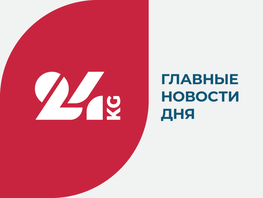The next state commission, the fourth in the last 9 years, has come to a height of more than 4,000 meters above sea level with inspection. Traditional ecology issue is on its agenda among other questions to the activities of Kumtor gold mine.
Cycle of Kumtor’s issues
After the latest political upheavals in Kyrgyzstan, which culminated in a change of government, another deputy commission was created in February to check the work of the country’s largest investor and taxpayer Kumtor. The inspectors demanded to arrange for them full and unimpeded access to the financial and economic, legal, technical, administrative and environmental documents of the company. The issue of preserving natural reservoirs of fresh water — glaciers — has surfaced among the sub-items like an iceberg.
Two glaciers, Davydov and Lysii, located near the place of the precious metal mining, have been under close public scrutiny throughout almost the entire history of development of Kumtor mine. Davydov’s fate is well known. To easily and safely for people and special equipment mine gold in the Central pit, the developer divides the ice mass and transports it to the neighboring valley at the same height.
In order not to run counter to the Water Code of Kyrgyzstan, which prohibits development of deposits near glaciers, amendments were made to the document in 2017. Kumtor became an exception to the rule, which was allowed to work in the permafrost zone at the legislative level for the sake of uninterrupted operation, regular deductions to the state treasury and preservation of the economic stability of the republic.
But, apparently, it was premature to think that an end had been put to this issue more than three years ago.
Inflated problem
The commission intends to calculate the damage caused to the glaciers during development of the field, and demand from the investor payment for the water that the company takes from the moraine-glacial Petrov lake for production activities and communal needs of the camp. Back in 2016, they have tried to calculate how much money should be taken from the developer for each cubic meter of ice. It was talked about making the investor pay for water — then, in order to introduce payments for the use of the resource for commercial purposes, the law would have to be changed again. But they, apparently, did not have enough intelligence for a thorough analysis with calculations. Water has not become a commodity in Kyrgyzstan either.
Scientists have a different view of the environmental problems with which Kumtor is traditionally associated.
Several years ago, an expert group led by Dmitry Petrakov, Associate Professor of the Department of Cryolithology and Glaciology at the Faculty of Geography of the Lomonosov Moscow State University, together with local colleagues-glaciologists, examined the snow-capped peaks of Kyrgyzstan; the glaciers near Kumtor mine became the object of study.
Scientists have come to an interesting conclusion: production at Kumtor has almost no effect on the melting of ice, and dusting of the glaciers’ surface is rather associated not with anthropogenic, but with natural conditions — dust is carried by winds from the deserts surrounding the Tien Shan and Pamir-Alai mountains.
As for the Davydov glacier, there is nothing to be done about it — it would be ridiculous to deny the direct human impact on it during development of the field. But even here, the glaciologists made an unexpected conclusion: the ice moved into the valley from the Davydov glacier is transformed into an ice massif, covered by a layer of detrital rock, which protects it from melting.
«The dumps do destroy glaciers, but preserve the ice itself. A paradox arises here. It is necessary to decide what is more important: ice as a water resource, or a glacier as such? Evidence that the ice is preserved is advancement of these man-made rock glaciers, which was noticed both by foreign researchers who analyzed space images and by our group. Against the background of the rapid reduction of other glaciers (more than 200 meters on average in Ak-Shyirak over the past 10 years), the ice massifs in the valleys of Davydov and Lysii glaciers, on the contrary, have advanced almost 1 kilometer,» Dmitry Petrakov says.
Analyzing the situation on a global scale, the expert voiced another «unpopular» conclusion: due to climate change, the republic annually loses a Davydov and a Lysii glacier.
«Here, as people say, it’s no use crying over spilled milk. The role of global warming in the degradation of glaciers and concession zone of the field in Kyrgyzstan and, in general, Ak-Shyirak massif is incomparably higher than that of Kumtor itself,» the Russian glaciologist concludes.
As for the possible calculation of the damage caused to glaciers during development of Kumtor mine, it is very difficult to do this. And, frankly speaking, it is not clear how to assess the possible losses.
«Let’s say the Parliament of the republic will determine how many cubic meters of glacial ice have been lost. Kumtor may well argue that the ice is not lost, but moved. Therefore, it seems to me, these will be politicized methods of counting,» the glaciologist believes. «Then, if the source of the troubles for the Davydov glacier is clear, what can we say about other glaciers in Kyrgyzstan? Who should be fined in this case? You can, of course, demand compensation from China, but I don’t think this attempt will be crowned with success,» Dmitry Petrakov says.
The only right decision is a rational approach. Any mining company, of course, must make environmental payments to the country’s budget. But these payments must be reasonable and adequate.
Unaccounted impact of smog
Experts trace connection between the state of the environment and pollution of the glacier surface. For example, the same low quality of atmospheric air in Bishkek in winter affects not only the well-being of the townspeople who breathe the polluted air, but also the «state of health» of the entire ecosystem.
Kyrgyz glaciologist Ryskul Usubaliev noted that particles of heavy metals also fall on glaciers carried by wind. Experts can easily determine their nature. For example, if cobalt is found on the surface of the ice, it means that the air masses brought it from the industrial area where metallurgical plants operate. Lead is released into the atmosphere with vehicle exhaust gases.
The smog that covers Bishkek every winter contains harmful chemical compounds.
Its origin is usually associated with three factors: the private sector, who burn everything that burns in their heating stoves, from tires to rags, a solid fuel used at Bishkek Heating and Power Plant, and automobile emissions.
«The presence of heavy chemical elements on the surface of the glacier is evidence of anthropogenic impact from cities and industrial zones. It is much more serious than a natural pollutant (natural dust), because when glaciers melt, these harmful substances enter the water and threaten human health,» Ryskul Usubaliev explained.
Focused research is needed to find out which heavy metals settle on our glaciers and what role smog plays in this, he said. But such scientific works are not carried out in Kyrgyzstan.
A natural question arises: why don’t our environmental agencies tackle this problem?
Army of auditors, but creators can be counted on one hand
Periodically used levers of pressure on the largest investor in Kyrgyzstan keep not only the gold mining company in good shape. Such zeal of government agencies can play a cruel joke on the whole country.
«Kyrgyzstan has concluded an agreement with the Canadian side on Kumtor project, which clearly spells out all the working conditions. According to the agreement, if one of the parties wants to change them, it is necessary to follow the procedure specified in it. The checks are unlikely to give results. The mining industry is a very complex sector of the economy. It has a number of sub-branches, which specialists should be competent in. In general, this issue is not of the deputy commission level,» Askar Sydykov, head of the International Business Council, said.
He stresses that any litigation with the largest taxpayer (new figures — only in 2020 Kumtor has replenished the budget of Kyrgyzstan by 14.5 billion soms) directly affects not only the investment climate in the mining industry, but also hits the economy in general.
Most large investors look at the experience of Kumtor and observe the processes around it. Therefore, the attitude of the state towards investors is the main advertisement or anti-advertisement for the country.
Askar Sydykov
According to him, in the light of constant inspections, the situation is such that everyone only wants to check, but not to create and build. While Kyrgyzstan is busy with endless checks and raking up the past, other countries support business and create anti-crisis programs to raise economic indicators and improve the well-being of people during the pandemic and an acute economic crisis.
Or, maybe, we have already coped with this?





